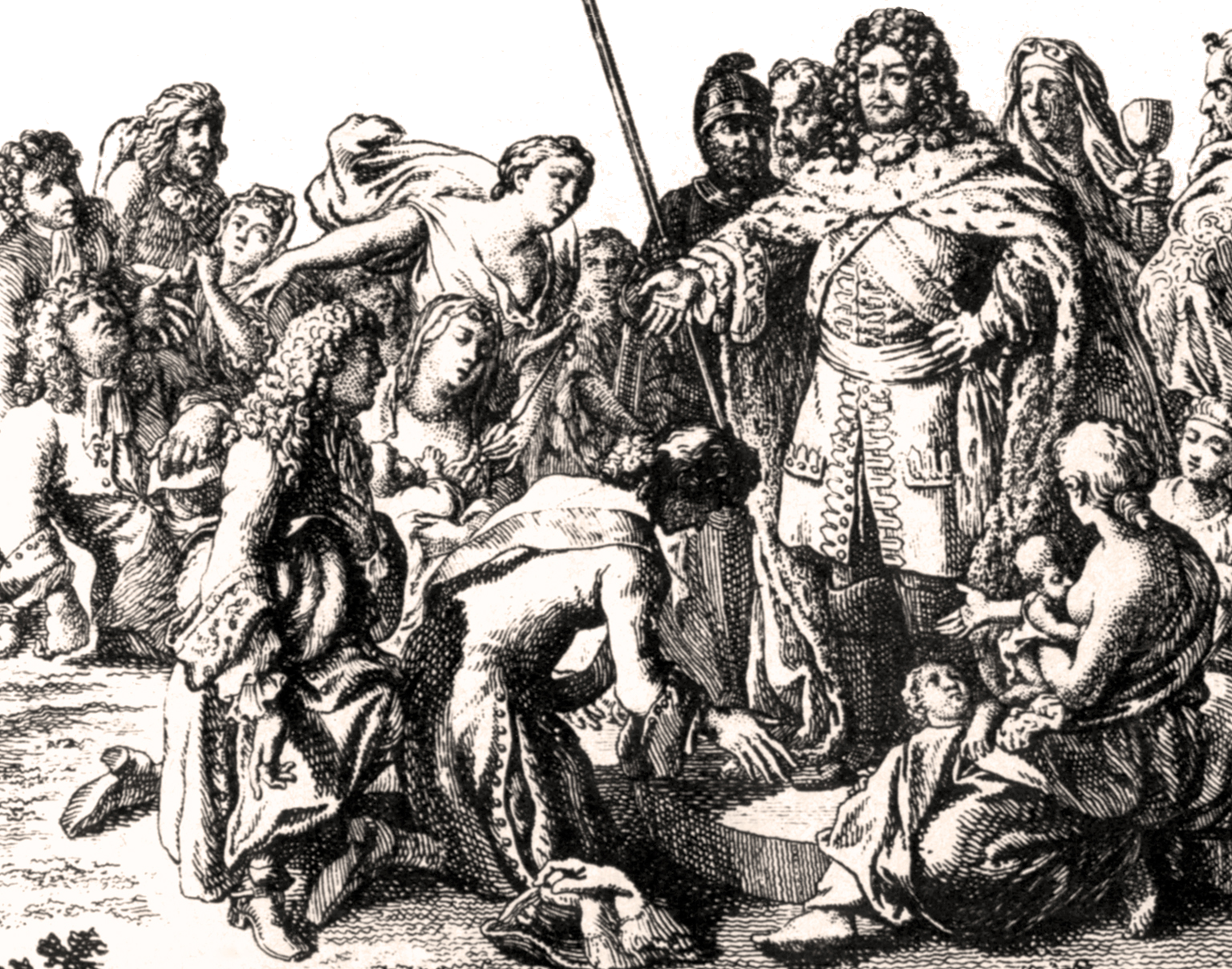SCHLOSS CHARLOTTENBURG ROOMS
1. Goldene Galerie
The festival salon in the Neuer Flügel, 42 m (138 ft) long, was designed in Rococo style by Frederick the Great’s favourite architect von Knobelsdorff. The richly ornamented room has a cheerful appearance.

Goldene Galerie in the Neuer Flügel
2. Eichengalerie
The wooden panelling of the Oak Gallery is carved with expensively gilded portraits of Hohenzollern ancestors.
3. Gris-de-Lin-Kammer
This small chamber in Friedrich’s second palace apartment is decorated with paintings, including some by his favourite artist, Antoine Watteau. The room was named after its wall coverings in violet-coloured damask (gris-de-lin in French).
4. Schlafzimmer der Königin Luise
Queen Luise’s bedchamber, designed in 1810 by Karl Friedrich Schinkel, features the clear lines typical of the Neo-Classical style. The walls are clad in silk fabrics and wallpaper.
5. Winterkammern
Friedrich Wilhelm II’s early Neo-Classical rooms contain fine paintings, tapestries and furniture.
6. Bibliothek
Frederick the Great’s small library has outstanding elegant bookcases and a vibrant, light green colour scheme.
7. Konzertkammer
Furniture and gilded panelling in the concert hall have been faithfully recreated as during Frederick the Great’s time. Antoine Watteau’s Gersaint’s Shop Sign, considered to be one of his most significant works, hangs here; the king bought the work directly from the artist.
8. Grünes Zimmer
The green room in Queen Elisabeth’s quarters is an excellent example of royal chambers furnished in 19th-century Biedermeier style.

Queen Elisabeth’s Grünes Zimmer
9. Rote Kammer
The elegant chamber, decorated entirely in red and gold, is adorned by portraits of King Friedrich I and Sophie Charlotte.
10. Friedrich I’s Audienzkammer
The ceiling paintings and Belgian tapestries depict allegorical figures symbolizing the fine arts and the sciences. There are also magnificent lacquered cabinets, modelled on Asian originals.
THE HOHENZOLLERNS AND BERLIN
In 1412, Burggraf Friedrich of the Hohenzollern dynasty of Nuremberg was asked by Sigismund of Luxemburg to support him in the princely feuding before the imperial election for the throne. When Sigismund became king, he gave Friedrich, in 1415, the titles of Margrave and Prince-Elector of Brandenburg as a reward for his services – this is where the histories of the Hohenzollerns and Berlin first became entwined, a relationship that was to last for 500 years. From the start, the family tried to limit the powers of the town and of the Brandenburg nobility. Culture, however, flourished under the new rulers, especially the Great Elector 200 years later, who invited 20,000 Huguenot craftsmen to Berlin and founded an art gallery and several schools. His grandson Friedrich Wilhelm I, father of Frederick the Great, transformed the city into a military camp, with garrisons and parade grounds, and scoured the town for tall men to join his bodyguard. In the 19th century, however, relations between Berlin and the Hohenzollerns became decidedly less cordial.

The Great Elector Receiving Huguenot Refugees, 18th-century etching by Daniel Chodowiecki
TOP 10 HOHENZOLLERN RULERS
1. Friedrich Wilhelm the Great Elector (1620–88)

Friedrich Wilhelm, the Great Elector
2. Friedrich I (1657–1713)
3. Friedrich Wilhelm I (1688–1740)
4. Friedrich II the Great (1712–86)
5. Friedrich Wilhelm II (1744–97)
6. Friedrich Wilhelm III (1770–1840)
7. Friedrich Wilhelm IV (1795–1861)
8. Wilhelm I (1797–1888)
9. Friedrich III (1831–88)
10. Wilhelm II (1859–1941)
